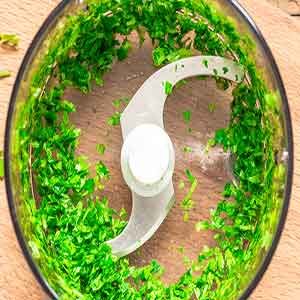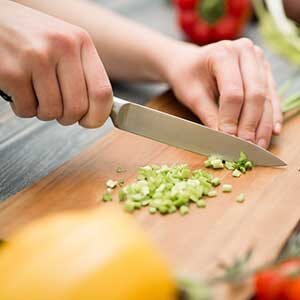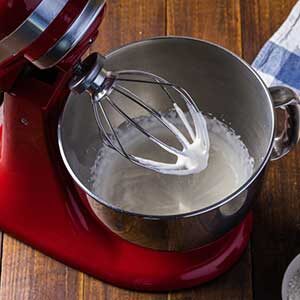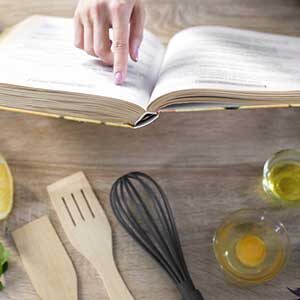What is the Difference Between Food Processor And Food Mixer

 Are you getting tired of handling everything by hand in your kitchen? Then, you should know about some of the powerful kitchen appliances that will make your kitchen time easy and enjoyable.
Are you getting tired of handling everything by hand in your kitchen? Then, you should know about some of the powerful kitchen appliances that will make your kitchen time easy and enjoyable.
Food processors and mixers are two of those appliances. But there are some confusions when it comes to using and choosing one of them.
If you also are confused, let’s get to know every relevant information about these appliances so that you can differ one from another and choose the right option for you.
So, what are the differences between a food processor and a mixer?
Let’s get to know in detail.
What is a Food Processor?
 Here we are talking about a kitchen appliance that works as a jack of all trades. You can shred, chop, slice, puree, and grind almost any type of food easily and quickly.
Here we are talking about a kitchen appliance that works as a jack of all trades. You can shred, chop, slice, puree, and grind almost any type of food easily and quickly.
Food processors and mixers are two of those appliances. But there are some confusions when it comes to using and choosing one of them.
If you are such a busy person that you cannot invest much time in your kitchen, then it is a perfect machine for you. Moreover, a processor offers you a lot of advantages from only one appliance.
What is a Mixer?
Mixers come in two major types- hand mixers and stand mixers. A mixer is another user-friendly kitchen appliance that works amazing when it comes to baking.
Apart from those two types, there are other types of mixers in the market (e.g eggbeaters, dough mixers). However, the most common and popular one is to stand mixers.
If you want to make world-class cookies, cream frosting, and cake batters, nothing can beat the necessity of a mixer.
Major Differences of a Food Processor and a Mixer
From the structure to uses and maintenance, there are some dissimilarities between a food processor and a mixer. Read on to know the details.
Structures and Functionalities
Two of the key factors that differ between a food processor from a mixer are structures and functionalities. Here you go with detailed information.
Food Processor
 The basic components of a food processor are- a set of attachments, a motor, a lid, and a bowl. The motor is the heaviest part of this device and this heaviness provides a food processor stability.
The basic components of a food processor are- a set of attachments, a motor, a lid, and a bowl. The motor is the heaviest part of this device and this heaviness provides a food processor stability.
About the bowl, it generally is made of transparent, durable plastic. And, the lid contains a feed tube that is attached with a plunger. The size of the bowls differs from machine to machine.
For example, a full-sized bowl has a capacity of 9-13 cups whereas a compact-sized one has a capacity of 5-7 cups.
Another worth-noting point is the blades of a food processor. The set of attachments help your food chopping, slicing, shredding, mixing, and grating easily. For the versatile structure, a food processor works great for dry ingredients.
Mixer
Among the other types, stand mixtures are the most used ones. This type is large enough and contains a powerful motor. The bowl in a mixer stays locked to the appliance and does not move while the mixer operates.
Stand mixers have a dough hook that allows you to knead, a wire whisk that whips creams and egg whites, and a flat beater that mixes batters.
Stand mixers are divided into two types- planetary mixers and spiral mixers.
Spiral mixers are mainly used for dough mixing purposes whereas planetary mixers are used for blending and whipping as well.
Power
The food processor has stronger motors than mixers. An average food processor can yield the highest 1,200-1,300 watts. And, when it comes to a mixer, the highest possible power range is 1000 watts.
Uses & Recipes
 Food processors work amazing for some recipes and mixers do the same for other recipes. For the different structure and functionality, both appliances work differently.
Food processors work amazing for some recipes and mixers do the same for other recipes. For the different structure and functionality, both appliances work differently.
When you need to blend some solid content (nut butter, hummus) with your mixer, you won’t get as perfect an outcome as a food processor. In the same way, if you want to have world-class baking, you need a mixer instead of a food processor.
Kneading dough, whisking egg whites/creams, and mixing batters will come out at best if you use a mixer. There are different brands and types of mixers and if you pick the benchtop top one, you can get some extra attachments (e.g blender, juicer, fruit press, etc).
On the other hand, you can make the best salsa, purees, pie crust, and baby foods by using a food processor. A food processor can handle more labor-intensive tasks better than mixers.
Pros and Cons of a Food Processor
When it comes to buying one of the two options, it’s better to know about the pros and cons of both of the options.
- Being a multi-use appliance, a food processor handles a wide range of cooking tasks.
- A great option for quick shredding, chopping, slicing, grating, grating, and a whole lot more.
- It saves time and energy.
- Being large in size, food processor may take a lot of space in your kitchen.
- Food processors consume more electricity than mixers.
- Harder to use and maintain.
Pros and Cons of a Mixer
Now, let’s get to know about the pros and cons of a mixer.
- A stand mixer is the best option when it comes to baking.
- It’s easier to use and maintain.
- It won’t take a lot of space in your kitchen.
- If your mixer doesn’t come with extra attachments (e.g blender or juicer), you can get limited services from the appliance.
Food Processor or Mixer? What Should You Choose?
The answer is, “it depends”. Choosing the one appliance between these two is totally up to you. Because you need to pick the one which matches your needs completely.
To make it clearer, if you focus on getting the best baking appliance, go for a mixer. But if you want to get multitasks services (chopping, shredding, slicing, and more) at the same time, go for a food processor.
Now, think wisely about which features you do need and choose the one that fits your needs most.
Things to Consider Before Buying One
No matter which one of the two appliances you are going to have, look at the must-have features below and consider having these features in your upcoming appliance.
Food Processor:
- Large bowl capacity.
- If you’re willing to blend liquids as well, check if the food processor contains a liquid maximizing and a watertight seal inside the bowl.
- Adjustable blades, slicing disc, and other attachments.
Mixer:
- Check if the mixer has single beater attachments including a scrape beater and a dough plus whisk hook.
- Suction feet that keep the mixer stable while mixing heavy doughs.
- Splash guard that will make scraping the bowl easier.
Conclusion
Mixers and food processors have both similarities and dissimilarities. However, they are to use for different purposes. Mixers work great when you are going to bake whereas food processors offer you to do multitasks.
For the structure, functionality, uses, power supply, and many other reasons, it’s easy to differentiate a food processor from a mixer. And, hopefully, at the end of the article, you now know what are the differences between these two appliances.
Make a choice wisely. Read the features and make sure if they meet all your needs. Once you make a choice and purchase one, be careful about the use and maintenance of your appliance.
- 11 Best Meat Tenderizers for the Juiciest Steak and Roast Chicken



